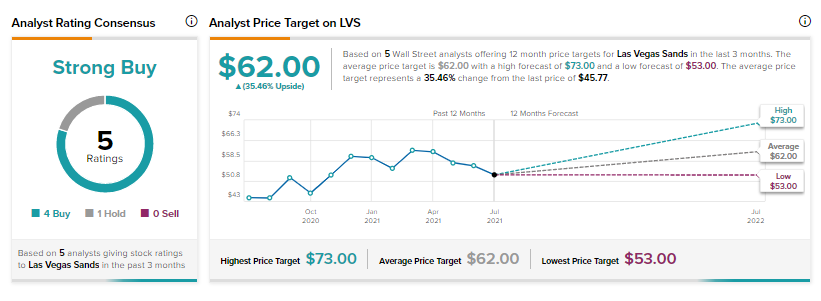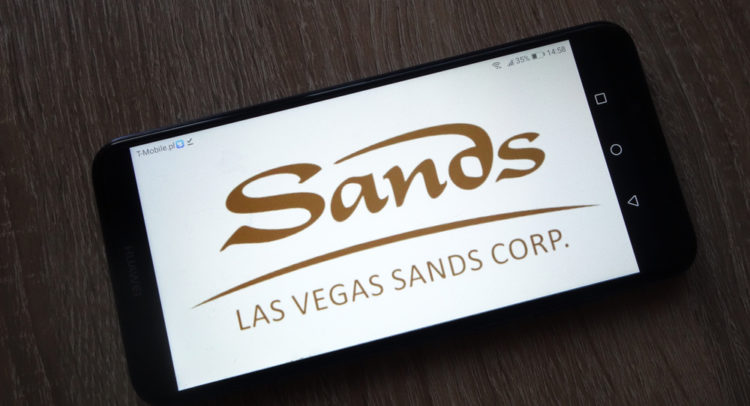Global integrated resorts operator Las Vegas Sands’ (LVS) recent Q2 results fell short of consensus estimates on both revenue and earnings per share fronts. Its stock price also dropped to $45 from $49 after the results.
Discover the Best Stocks and Maximize Your Portfolio:
- See what stocks are receiving strong buy ratings from top-rated analysts.
- Filter, analyze, and streamline your search for investment opportunities with TipRanks’ Stock Screener.
Along with its Q2 financial dynamics, let’s take a look at what’s changed in the company’s key risk factors that investors should be aware of.
During the quarter, COVID-19 associated travel restrictions and lower footfalls continued to affect the company’s results.
The Chairman and CEO of LVS, Robert G. Goldstein, said, “We remain confident in the eventual recovery in travel and tourism spending across our markets. Demand for our offerings from customers who have been able to visit remains robust, but pandemic-related travel restrictions in both Macao and Singapore continue to limit visitation and hinder our current financial performance.”
Amid this, Q2 net revenue of $1.17 billion was significantly higher than a year ago’s net revenue of $62 million, however, still fell short of analysts’ estimates by $215.3 million. The year-over-year revenue growth was witnessed on the back of higher sales from Casino, Rooms, Food & Beverage, Mall and Convention & Retail segments.
The company’s net loss per share at $0.25 was narrower than a year ago’s net loss per share of $1.07. (See Las Vegas Sands stock chart on TipRanks)
Earlier in March, LVS agreed to sell its Las Vegas real property and operations for a consideration of approximately $6.25 billion. It expects this transaction to close in Q4 2021.
Following LVS’s Q2 performance, Stifel Nicolaus analyst Steven Wieczynski reiterated a Buy rating on the stock and lowered the price target to $65 from $77.
The analyst feels recovery in Macau/Singapore is a slow process and a lack of clarity on when market conditions will revert to normal makes it prudent to stick with conservative estimates. Nevertheless, Wieczynski sees a significant upside in the shares from current levels.
Based on 4 Buys and 1 Hold, consensus on the Street is a Strong Buy. The average LVS price target of $62 implies 35.5% upside potential.

Now, let’s look at what’s changed in the company’s key risk factors profile.
According to the new Tipranks Risk Factors tool, LVS’s two main risk categories are Legal & Regulatory and Production, which account for 23% each, of the total 39 risks identified. Since June, the company has added one new key risk factor under the Finance & Corporate risk category.
The company highlights that it is subject to a number of risks related to the proposed sale of its Las Vegas operations. These include a failure to satisfy the closing conditions of the transaction and receiving necessary regulatory approvals.
These risks could adversely impact the company’s operations, financial condition and business.
The Production risk factor’s sector average is at 17%, compared to LVS’s 23%. Shares are down 21% so far this year.

Related News:
JPMorgan to Double Advisors in Broker Business – Report
WISA launches WiSA Amazon Storefront; Shares Hit Record High
ImmunoPrecise’s TATX-03 Antibody Cocktail Potently Neutralizes Delta Variant









